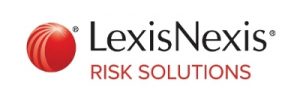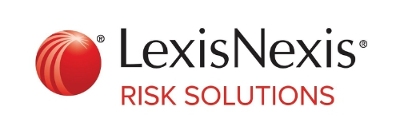 In the face of credit bureaus’ new restrictions on reporting liens and judgments, LexisNexis Risk Solutions provides access to detailed and reliably linked data
In the face of credit bureaus’ new restrictions on reporting liens and judgments, LexisNexis Risk Solutions provides access to detailed and reliably linked data
LexisNexis® Risk Solutions announced the broad availability of LexisNexis® RiskView™ Liens & Judgments Report, which provides lenders with detailed, reliable data for making credit decisions. The new, robust data report, which relies on LexisNexis Risk Solutions proprietary advanced linking technology, comes ahead of the credit bureaus’ decision to cease offering access to most liens and judgment data as of July 1, 2017, as a result of the settlement between the Nationwide Credit Reporting Agencies (NCRA) and over 30 state Attorneys General.
“The mortgage industry still needs to address the coming changes to credit bureau reporting of liens and judgments and time is running out,” said Tim Coyle, senior director, real estate and mortgage at LexisNexis Risk Solutions. “LexisNexis RiskView Liens & Judgments Report provides the tools so that the industry can avoid disruption, which will benefit lenders, investors, insurers, title companies and homeowners.”
In several weeks, the three NCRA companies will eliminate approximately 50 percent of tax liens data and 96 percent of civil judgments data from their credit reports. While this is intended to make credit reporting more accurate, it has created the potential for increased uncertainty for mortgage lenders when evaluating consumer home loan applications.
LexisNexis Risk Solutions has found that approximately 11 percent of U.S. consumers have a tax lien or civil judgment on file. Consumers who have a lien or civil judgment removed from their credit file experience an average increase of 10 points to their credit score. Reports citing FICO data project that 11 million consumers will see an increase of less than 20 points and 700,000 consumers will see their scores rise by at least 40 points. This is acutely relevant data for lenders, who evaluate large numbers of consumers for a wide variety of mortgage types varying in structure and term. Removing this data creates a blind spot for mortgage lenders.
With these new restrictions on credit bureaus’ reporting of liens and judgments data, mortgage lenders must be prepared to adjust. Without liens and judgements information, the ability for a lender to match a loan to an applicant’s creditworthiness is diminished, let alone their ability to comply with investor requirements. Additional loan processing costs and delays are often incurred if this information is discovered later. If liens and judgments data is discovered after closing, there is potential risk to the lien position of the mortgage, as well as underrepresentation of the true risk to the mortgagee.
The LexisNexis RiskView Liens & Judgments Report, available now, delivers technology advancements that bolster the reliability of lien and civil judgment content. With this information, mortgage lenders can determine the count of liens and judgments on file, the type, the dollar amount of tax liens, and more, including specific details for each lien and judgment included in the report. Using the industry-leading LexID® identity linking technology, lenders and consumers can be confident that LexisNexis Risk Solutions has robust processes designed to link the right person to the right record, with greater than 99 percent reliability. LexisNexis RiskView Liens & Judgments Report will be available to customers via XML and batch, to support real-time and overnight workflow processing needs.
While liens and judgments records have long been included as part of the RiskView™ product, this new offering is specifically tailored to provide the liens and judgments data that credit bureaus will soon exclude, and is compliant with Fair Credit Reporting Act regulations.
Source: LexisNexis Press Release






















